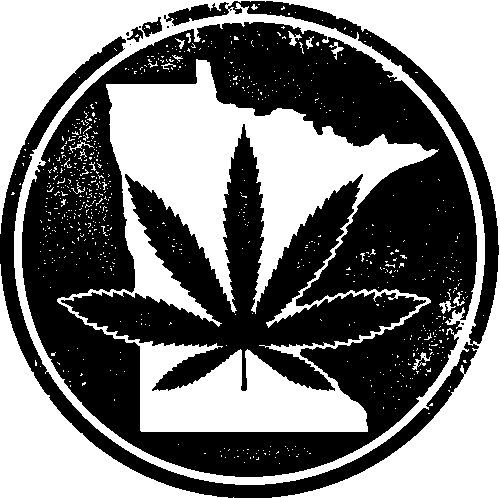If medical marijuana becomes legal starting July 1, 2021, in South Dakota, as proposed so far, the state will join 36 other U.S. states where medicinal pot is legal, including neighboring states North Dakota, Montana and Minnesota.
Nebraska does not allow marijuana in any form, while Iowa has a restrictive law allowing medical CBD use in limited cases; Wyoming has no legal-marijuana laws, and a legislative effort in the 2021 session to legalize both medical and recreational pot appears to have died.
South Dakota voters in November 2020 also approved a constitutional amendment to legalize recreational marijuana sales, possession and use by adults, but that measure is facing a legal challenge that seems likely to delay its scheduled implementation date of July 1.
North Dakota lawmakers considered legislation that would legalize the use and tax the sales of recreational marijuana in the state, but that measure appeared to fail in late March.
Here is a look at how medical marijuana legalization has fared in neighboring states.

North Dakota
South Dakota’s neighbor to the north is the most recent of nearby states to approve a medical marijuana program.
In North Dakota, 64% of voters approved an initiated measure in November 2016 to legalize medical marijuana, but lawmakers suspended the act the following January before passing a new, more detailed measure approving medicinal pot that took effect in April 2017. The Legislature felt compelled to overturn and redo the medical marijuana act because the ballot language, copied from a similar measure passed in Delaware, did not account for changes needed in other laws, and would have made legitimate medical marijuana users subject to felonies for possession if laws were not updated.
“When we talk about an initiated measure that did need some work, there were a lot of things that were in that initiated measure that needed some work,” said Jason Wahl, director of the North Dakota Division of Medical Marijuana. “I don’t believe the people who wrote the measure intended to set up a program that put people in illegal possession when they bought products, but that is in effect what the initiated measure did.”
Wahl said state research indicated that it took from 18 to 24 months in most states to set up medical marijuana programs once legalization took effect. In North Dakota, it took just less than two years from approval to the first legal marijuana sales.
The first of two state-approved cannabis cultivation, processing and packaging plants opened in September 2018, and the first marijuana dispensary opened in March 2019. State law caps the manufacturing plants at two and dispensaries at eight, and both limits have been reached.
The state Department of Health was put in charge of marijuana regulation and revenue collection, and a new Division of Medical Marijuana was created, Wahl said. The department has five full-time positions; state documents show that the medical marijuana division had expenses of $597,000 in Fiscal 2020 and collected $743,000 in fees. Sales data for medical marijuana is confidential under state law, Wahl said, and a North Dakota taxation official said state and local sales taxes apply to medical marijuana but the amount collected is not a public record at this time.
Most of the companies that are manufacturing and selling marijuana are owned by North Dakota entities, Wahl said.
Two years after sales of medical marijuana began, North Dakota has about 5,000 patients with prescriptions, Wahl said, exceeding the state’s initial projection of 4,000 cardholders by June 2021.
North Dakota began its program with a list of 13 debilitating medical conditions that could qualify a patient for a medical marijuana prescription from a certified doctor, including cancer, epilepsy, PTSD, terminal illness, seizures, muscle spasms, spinal stenosis or chronic back pain, and severe pain that does not respond to other medications. In 2019, the state expanded the list with 12 more qualifying conditions, including anxiety disorder, migraines, autism and rheumatoid arthritis. State data indicate that anxiety disorder has become the most commonly cited condition, followed by back pain or stenosis, severe pain and PTSD.
South Dakota’s legislation allows patients with certain medical conditions to get a card that allows them to obtain, possess and use medicinal marijuana.
South Dakota Initiated Measure 26 defines qualifying conditions as: a chronic or debilitating disease or medical condition or its treatment that produces one or more of the following: cachexia or wasting syndrome; severe, debilitating pain; severe nausea; seizures; or severe and persistent muscle spasms, including those characteristic of multiple sclerosis; or any other medical condition or its treatment added by the department. The program also allows more conditions to be added by the Department of Health after implementation.
Wahl said North Dakota took a deliberate, thoughtful approach to creating a regulatory framework and distribution system for cannabis that has functioned well and drawn supportive comments from lawmakers and medical marijuana patients.
“From the beginning, the goal from our standpoint was to implement a well-regulated program, and I think we’ve accomplished that goal,” he said.

Minnesota
Medical marijuana became legal in Minnesota in July 2015, about 14 months after the state Legislature approved the program and the governor signed it into law. The program is seen as one of the most restrictive and expensive in the nation and has allowed for relatively few prescriptions given the state’s population of roughly 5.6 million.
As of March 2021, about 45,000 patients had obtained medical marijuana prescriptions in Minnesota; about 32,000 were considered active enrollees in the program, state data show. More than half are in the 35-65-year-old age group.
The program began with nine medical conditions that could qualify patients for a medical marijuana prescription, including cancer, glaucoma, seizures, persistent muscle spasms and terminal illness. Over the past four years, the state has added six more qualifying conditions, including intractable pain, PTSD, autism, sleep apnea, Alzheimer’s and chronic pain. The state has so far rejected a request to add anxiety to the list. Through 2020, the top five conditions cited by approved patients include intractable pain, which accounts for almost 60% of all prescriptions, followed by PTSD, muscle spasms, cancer and sleep apnea.
The state charges most patients $200 for a medical card that must be prescribed by one of about 1,850 certified practitioners across the state. Minnesota has 13 approved dispensaries spread out across the state; home cultivation of marijuana is not allowed.
Montana
Montana was among the first dozen or so U.S. states to vote to legalize medical marijuana when voters approved a ballot measure in 2004 (California was first in 1996), but the road to legal sales and use of medical marijuana in Montana has been bumpy since then.
In 2011, the Legislature cracked down on medical marijuana sales with a sweeping bill that made it harder to get a prescription and severely limited opportunities to purchase marijuana. A years-long court challenge ensued until 2016, when a subsequent statewide initiative eliminated the strictest limits on obtaining a prescription and marijuana products, and added chronic pain and PTSD as qualifying conditions.
The current laws allow for a prescription to be obtained by patients with one of 11 qualifying conditions, including PTSD, severe chronic pain, painful neuropathy (severe nerve pain), intractable nausea, cancer, glaucoma and epilepsy. By far, the top condition cited by patients is severe chronic pain, followed by PTSD and painful neuropathy.
As of December 2020, the state with a population of about 1 million people had about 42,000 medical pot cardholders and about 360 certified medical providers. The state has about 355 dispensaries. Patients can grow their own marijuana and legally possess a pound of usable marijuana at their residence.
About 57% of Montana voters approved a statewide ballot measure in November 2020 to legalize adult recreational use of marijuana. Licenses for growth and sale of recreational marijuana will be offered starting in October 2021, with the first legal sales of recreational marijuana set to begin in January 2022.



